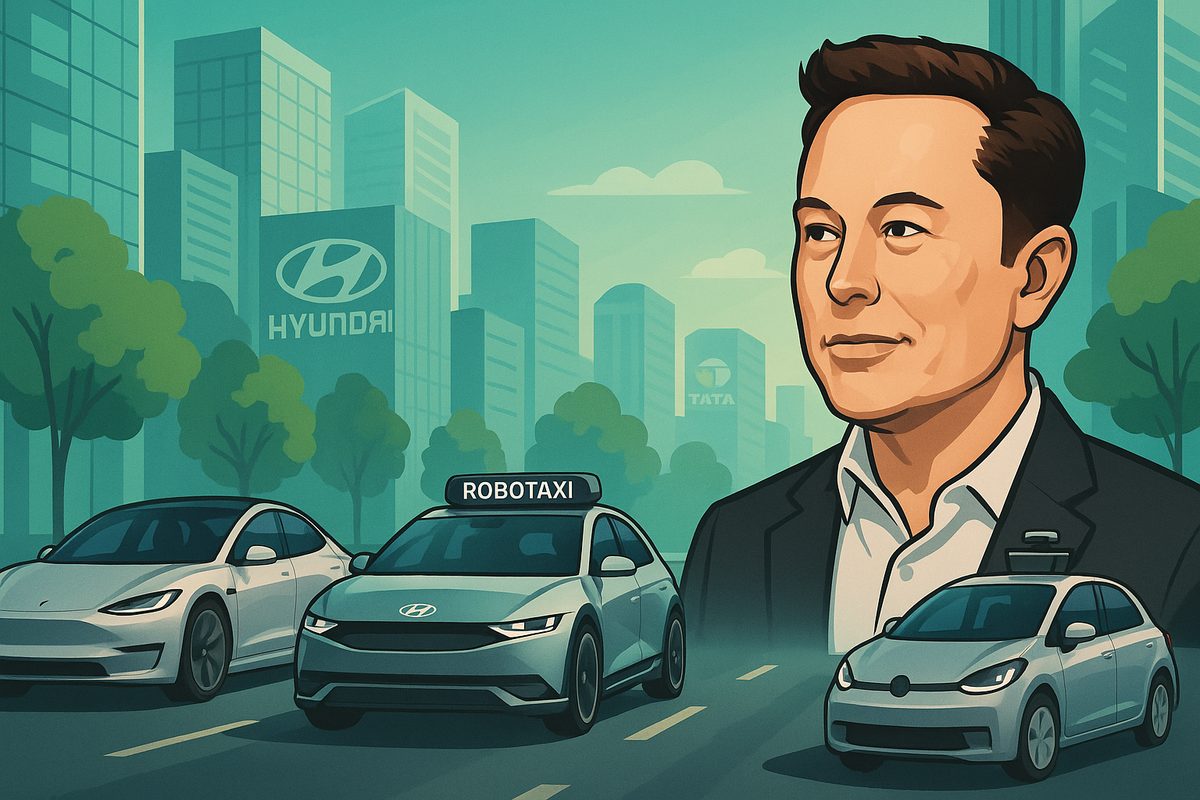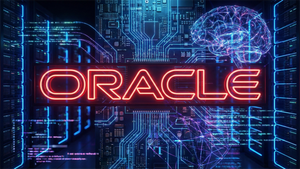
The global automotive industry is currently navigating a period of profound transformation, marked by groundbreaking strategic shifts, evolving market dynamics, and significant leadership changes. Recent developments, including a colossal new pay package for Tesla (NASDAQ: TSLA) CEO Elon Musk tied to the company's ambitious robotaxi and humanoid robot ventures, the continued sales supremacy of the Hyundai (KRX: 005380) Creta in the fiercely competitive Indian market, and the historic appointment of P.B. Balaji as the first Indian CEO of Jaguar Land Rover (JLR), a subsidiary of Tata Motors (NSE: TATAMOTORS), underscore a sector in flux. These events collectively signal a future where autonomous technology, emerging market strength, and diverse leadership will play pivotal roles in shaping the industry's trajectory and influencing public companies worldwide.
A Triumvirate of Transformation: Tesla's AI Bet, Hyundai's Market Grip, and JLR's New Era
The automotive world is abuzz with three distinct yet equally impactful narratives. First, Tesla's board has approved an "interim award" for Elon Musk, a staggering stock package valued at approximately $29 billion. This move comes after a Delaware court invalidated Musk's previous 2018 compensation package, citing procedural flaws. The new deal, comprising 96 million new shares, is presented as a good-faith effort to honor the spirit of the voided agreement and, crucially, to align Musk's focus with Tesla's aggressive pivot towards artificial intelligence (AI), autonomous driving, and robotics, particularly robotaxis and humanoid robots. Musk can claim these shares if he remains a top executive for two more years and if the 2018 package is not reinstated, with a five-year holding period and an exercise price of $23.34 per share. This strategic compensation aims to secure his long-term commitment as Tesla transitions from primarily an electric vehicle manufacturer to a leader in AI and autonomy, a critical shift amidst declining EV sales and heightened competition. A longer-term CEO compensation plan is expected to be proposed at the company's annual investor meeting on November 6.
Concurrently, in the vibrant Indian automotive landscape, the Hyundai Creta has solidified its position as a market juggernaut. For the January-July 2025 period, the Creta emerged as India's highest-selling passenger vehicle across all segments, with 117,458 units sold, marking an 8% year-on-year growth. Celebrating its tenth anniversary in India, the Creta has surpassed 1.2 million cumulative domestic sales since its 2015 launch, consistently dominating the mid-size SUV segment with over 31% market share—a testament to its dynamic design, advanced features, diverse engine options (petrol, diesel, and turbo), robust after-sales service, and strong resale value. The 2024 facelift, which achieved 100,000 sales within six months, further bolstered its appeal with features like a panoramic sunroof, large touchscreen infotainment system, and advanced driver-assistance systems (ADAS).
Finally, a significant leadership transition is underway at Jaguar Land Rover (JLR). Tata Motors (NSE: TATAMOTORS) has announced the appointment of P.B. Balaji, currently the Group Chief Financial Officer (CFO) of Tata Motors, as the new CEO of JLR, effective November 2025. Balaji will succeed Adrian Mardell, who is retiring after 32 years with JLR, including three years as CEO. This appointment is historic, as Balaji will be the first Indian to lead the British luxury automaker in an executive capacity. His selection, following a formal board-led succession process, acknowledges his deep involvement with JLR's leadership and strategic direction. N. Chandrasekaran, Chairman of Jaguar Land Rover, Tata Motors, and Tata Sons, expressed confidence in Balaji's ability to steer JLR through its "Reimagine" strategy, which focuses on electrification, profitability, and elevating its premium brands, especially as Tata Motors undergoes a demerger of its passenger vehicle and commercial vehicle businesses.
Winners and Losers in the Automotive Chess Game
The recent developments present a clear delineation of potential winners and losers within the automotive ecosystem. Tesla (NASDAQ: TSLA), despite the controversy surrounding Musk's pay deal, stands to be a significant winner if its robotaxi and humanoid robot ambitions materialize. The massive compensation package, if upheld, incentivizes Musk to dedicate his formidable vision and drive to these high-risk, high-reward ventures. Success in autonomous driving and robotics could unlock unprecedented revenue streams, transforming Tesla from a car company into a dominant AI and mobility services provider, potentially leaving traditional automakers far behind. However, the immediate "loser" in this scenario could be Tesla's shareholders if the deal is perceived as excessive or if the robotaxi vision fails to materialize, leading to potential stock volatility and legal challenges.
Hyundai Motor Company (KRX: 005380) and its Indian subsidiary are clear winners. The sustained dominance of the Hyundai Creta not only reinforces Hyundai's strong foothold in one of the world's fastest-growing automotive markets but also provides a stable revenue base and significant brand equity. This success allows Hyundai to invest further in R&D, expand its product portfolio, and strengthen its dealer network, giving it a competitive edge against rivals like Maruti Suzuki (NSE: MARUTI) and Mahindra & Mahindra (NSE: M&M) in India. The "losers" here are the competitors in the Indian mid-size SUV segment who are struggling to unseat the Creta, facing an uphill battle against its established market leadership and strong consumer loyalty.
Tata Motors (NSE: TATAMOTORS), as the parent company of JLR, is poised to be a winner with the appointment of P.B. Balaji. His deep understanding of Tata Motors' broader strategy and his financial acumen are crucial as JLR navigates its "Reimagine" strategy, focusing on electrification and profitability. This internal promotion signals stability and a clear strategic direction, potentially boosting investor confidence in JLR's transformation. The "loser" in this context is the traditional perception of leadership at luxury European brands, as Balaji's appointment breaks a long-standing mold, potentially challenging established norms within the global luxury automotive sector. Competitors in the luxury segment, such as BMW (ETR: BMW) and Mercedes-Benz (ETR: MBG), might find JLR's renewed strategic focus under new leadership a more formidable challenge.
Industry Impact and Broader Implications
These developments are not isolated incidents but rather integral components of broader, transformative trends sweeping across the automotive industry. Tesla's intensified focus on robotaxis and humanoid robots signifies a profound shift from hardware-centric manufacturing to software-defined mobility and AI. This aligns with the industry's broader move towards autonomous driving, but Tesla's aggressive timeline and direct pivot into robotics push the boundaries further, potentially accelerating the race for Level 4 and Level 5 autonomy. This could create ripple effects, forcing traditional automakers and tech giants like Alphabet's (NASDAQ: GOOGL) Waymo and Amazon's (NASDAQ: AMZN) Zoox to either accelerate their own autonomous programs or risk being left behind in the future mobility landscape. Regulatory bodies will also face increasing pressure to develop comprehensive frameworks for autonomous vehicles and AI ethics, a complex task given the rapid pace of technological advancement. Historically, such disruptive shifts, like the transition from internal combustion engines to electric vehicles, have often led to significant market revaluations and the emergence of new industry leaders.
Hyundai Creta's continued dominance in India highlights the growing importance of emerging markets as key growth drivers for the global automotive industry. As mature markets in North America and Europe face saturation and slower growth, regions like India, Southeast Asia, and Latin America offer immense potential due to their burgeoning middle classes and increasing disposable incomes. This trend will likely encourage more global automakers to tailor their product offerings specifically for these markets, focusing on affordability, localized features, and robust after-sales networks. It also underscores the strategic importance of strong regional manufacturing and supply chains. The success of models like the Creta could serve as a blueprint for other manufacturers looking to penetrate and succeed in diverse and price-sensitive markets, potentially leading to increased competition and innovation in the compact SUV segment globally.
The appointment of P.B. Balaji as JLR's CEO reflects a broader trend of diversifying leadership within global corporations, moving beyond traditional geographical or industry-specific backgrounds. His financial expertise and deep understanding of the Tata Group's strategic vision are crucial as JLR navigates its "Reimagine" strategy, which involves a significant investment in electrification and a focus on profitability. This move could inspire other legacy automakers to consider non-traditional candidates for top leadership roles, prioritizing strategic acumen and financial discipline over purely engineering or design backgrounds. It also reinforces the increasing influence of Indian business leaders on the global stage, reflecting India's growing economic prowess and talent pool. The success of JLR under Balaji's leadership could set a precedent for how global luxury brands adapt to new market realities and embrace diverse perspectives in their executive suites.
What Comes Next
In the short term, the automotive industry will closely watch the outcome of the legal proceedings surrounding Elon Musk's pay deal and the subsequent proposal of a longer-term compensation plan at Tesla's November 6 investor meeting. The market's reaction to these events will significantly influence Tesla's stock performance and its ability to attract and retain top talent for its ambitious AI and robotics initiatives. Investors will also be keen to see tangible progress on Tesla's robotaxi deployment and humanoid robot development, as these are now directly tied to Musk's incentives. For Hyundai, maintaining the Creta's sales momentum in India will be a key short-term objective, potentially through further facelifts, new variants, or aggressive marketing campaigns to fend off rising competition. At JLR, Balaji's immediate focus will likely be on ensuring a smooth transition, accelerating the "Reimagine" strategy's electrification goals, and optimizing financial performance amidst the ongoing demerger of Tata Motors' businesses.
Looking further ahead, the long-term possibilities are transformative. If Tesla successfully deploys a widespread robotaxi network, it could fundamentally disrupt urban transportation, creating a new paradigm for mobility services and potentially rendering traditional car ownership less appealing in major cities. This would open up massive market opportunities in ride-hailing, logistics, and even personal robotics. However, significant regulatory hurdles, technological challenges, and public acceptance issues remain. For Hyundai, sustained success in India could pave the way for deeper market penetration in other emerging economies, allowing it to leverage its expertise in developing market-specific vehicles. This could lead to a more diversified global revenue base, reducing reliance on mature markets. JLR, under Balaji's leadership, is expected to accelerate its transition to an all-electric luxury brand, potentially solidifying its position in the premium EV segment. This strategic pivot will require substantial investment in new platforms, battery technology, and charging infrastructure, but it also presents an opportunity to redefine luxury mobility for the electric age. Potential strategic pivots for competitors might include forming new partnerships for autonomous tech development or intensifying their focus on specific regional markets where they hold a competitive advantage.
Conclusion
The recent developments in the automotive sector—Tesla's audacious bet on AI and robotics through Musk's pay deal, Hyundai Creta's unwavering dominance in India, and Tata Motors' strategic leadership change at JLR—collectively paint a picture of an industry in dynamic evolution. These events underscore a fundamental shift towards autonomous and AI-driven mobility, the increasing strategic importance of emerging markets, and a growing openness to diverse leadership in global corporations.
The key takeaway is that the automotive industry is no longer solely about manufacturing vehicles; it's rapidly becoming a battleground for technological supremacy, market share in high-growth regions, and agile corporate governance. Tesla's move highlights the high stakes and potential rewards of pioneering disruptive technologies, while Hyundai's success demonstrates the power of understanding and catering to specific market needs. JLR's leadership transition signifies a pragmatic approach to navigating complex transformations within a legacy brand.
Moving forward, investors should closely watch several critical indicators. For Tesla, the progress on robotaxi deployment, regulatory approvals for autonomous driving, and the financial performance of its AI ventures will be paramount. For Hyundai, continued sales figures in India and its expansion strategies in other emerging markets will be key. For Tata Motors and JLR, the execution of the "Reimagine" strategy, particularly the pace of electrification and profitability improvements, will be crucial. The coming months will undoubtedly reveal how these strategic shifts translate into tangible market outcomes, shaping the competitive landscape and defining the future of mobility.






